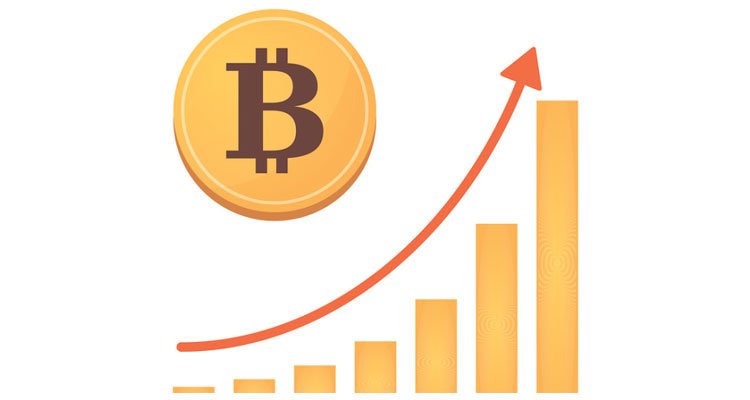|
Bitcoin’s prices reached all-time highs above $40,000 less than a month after breaking $20,000 for the first time. Since the start of the most recent rally, ostensibly begun in October, its value has increased fourfold.
So for pros and newbies alike, or if you want to be the cryptocurrency expert at your next Zoom party, it’s natural to ask: Why are prices going up, and will bitcoin crash? Bitcoin (BTC) was just invented 12 years ago as a new type of electronic payment system, built atop an Internet-based computing network that no single person, company or government could control. The reality is that the cryptocurrency’s trading history is so short, with methods for valuing the asset still largely untested, that nobody really knows for sure what it should be worth now, or in the future. That hasn’t stopped digital-asset investors or even Wall Street analysts from putting out price forecasts ranging from $50,000 to $400,000 or beyond. Based on CoinDesk’s reporting, here are a few key reasons why bitcoin prices have recently rallied:
The cryptocurrency’s price is notoriously volatile, and substantial and unexpected price swings aren’t uncommon. Below is a sampling of comments from cryptocurrency analysts and other financial experts on how a pullback might look, and what might cause it.
Just don’t tell them when.
1 Comment
In the financial world, “what’s past is prologue.” Overly rosy perspectives often set off the boom-and-bust cycles that have become all-too familiar over the past 20 years, from the dot-com bubble to the mortgage crisis.
Over the past 12 years, we’ve watched bitcoin’s BTCUSD, 1.55% evolution from netherworld currency to major institutional commodity. In that time, it has fluctuated widely, introduced as a near-valueless currency in 2009, growing in value to $19,000+ nearly nine years later, then losing 76% of its market value within a year, before beginning a steady climb in the second half of 2020 that puts its value at more than $30,000. We believe that bitcoin has matured and now is the right time to invest in this widely popular currency. Here’s why: Today, there is significantly more demand for bitcoin than there is supply. About 900 new bitcoin are mined daily, and three market participants alone — PayPal, Square, and Grayscale Bitcoin Trust — purchase considerably more than 900 bitcoin a day because of high investor demand. If this dynamic continues, and we believe it will, much higher prices lie ahead for the dominant cryptocurrency. At the same time, the risks associated with investing in bitcoin—namely the potential for theft—have been substantially diminished over the past three years, with the U.S. Office of the Comptroller of the Currency authorizing national banks to provide cryptocurrency services. Several banks have also started to provide institutional bitcoin custody services, deposit-taking, custody and fiduciary services for digital assets. What’s more, the IRS bestowed favorable tax treatment on bitcoin by treating it as property that produces capital gains and losses. And in another positive sign, PayPal rolled out bitcoin trading to its 238 million U.S. users. As a consequence of these regulatory and infrastructure developments, Wall Street has turned bullish on bitcoin. Rick Reider, BlackRock’s chief investment officer, recently commented on CNBC that bitcoin “could take the place of gold…it’s so much more functional than passing a bar of gold around.” AllianceBernstein issued a report on Nov. 30 entitled “Cryptocurrencies in asset allocation – I have changed my mind!” J.P. Morgan issued a report on Dec. 3 declaring “the adoption of bitcoin by institutional investors has only begun.” Bitcoin is now on the menu for asset allocators. It has been embraced by several legendary investors, including Paul Tudor Jones, Stanley Druckenmiller, Bill Miller and Alan Howard, and a wall of institutional money is coming. Hedge funds are starting to buy, headlined by the Tudor BVI Global Fund and One River Asset Management. Insurance companies are starting to buy, with MassMutual recently buying a $100 million starter position in bitcoin. Pension funds are starting to buy, including two Fairfax Retirement System pension funds making investments into a Morgan Creek Digital fund. Public company treasurers are starting to buy, with MicroStrategy MSTR, +0.80% and Square SQ, +3.88% account for nearly $1.5 billion in bitcoin purchases. Registered investment advisers are starting to buy, with legendary RIA founder Ric Edelman launching the RIA Digital Assets Council. The adoption floodgates are open. SkyBridge initiated a substantial position in bitcoin on behalf of our flagship funds in November and December, which, at today’s prices, is worth $200 million, and has launched the SkyBridge Bitcoin Fund, which provides mass-affluent investors with an institutional-grade vehicle to gain exposure to bitcoin. We credit our “aha” moment to Michael Saylor, the chief executive of software company MicroStrategy, who bought $1.2 billion of bitcoin in 2020. During a recent SALT Talk, Saylor made a persuasive case that bitcoin, as the undisputed winner of the cryptocurrency wars of 2017, is the dominant digital monetary network. Like Saylor, we believe that when a digital network—think Facebook, Amazon and Google—achieves a market capitalization of over $100 billion, the horse is out of the barn. Bitcoin is an evolutionary step forward for the technology of money, which has steadily progressed from barter to beads to gold to fiat currency. Bitcoin is the first store of value in the world where supply is entirely unaffected by increased demand. Some 18.5 million bitcoin have been mined so far, and by 2025, over 20 million will be in circulation. Yet there can only ever be 21 million bitcoin because of a stipulation set forth in its source code. To place that number in context, there are 42-plus million people in the world with a net worth exceeding $1 million, meaning there are twice as many millionaires today as there will ever be bitcoins in circulation. Today, the fact remains that bitcoin’s demand exceeds supply, and it is not even close. Economics 101 tells us how this calculation will work out. What more do you need to know?
That's according to Fundstrat's Tom Lee, who said in an interview with CNBC on Wednesday that he sees bitcoin surging another 300% next year. At its current price of about $29,000, a quadruple in bitcoin would put the crypto asset well above the $100,000 mark at $116,000. Driving bitcoin higher would be a similar setup to what was seen in 2017: a parabolic rally. Lee tweeted that the halvening of 2020 makes this year most similar to 2016, which also experienced a halvening. A halvening in bitcoin is when the reward for miners completing problems on the bitcoin blockchain is cut in half. 2021 will be most like 2017 in that bitcoin will likely experience a "parabolic rise," Lee tweeted. Fundstrat's digital asset strategist David Grider also raised his outlook for bitcoin in a note on Wednesday, expecting the crypto asset to hit at least $40,000 next year. "We believe the conditions remain in place for a continued rally in bitcoin and crypto more broadly over the next 6-12 months. Institutional and corporate buying, regulatory de-risking and retail stimulus demand are factors that have led to an increase in positive momentum, which we believe can continue," Grider said. But if the stock market corrects next year, the positive outlook for bitcoin may deteriorate, according to Lee. "Bitcoin acts like a risk on asset, so in the years where the S&P performs the best are also the best years for bitcoin. So I think if we have a correction in stocks then bitcoin is going to fall," Lee explained. Just two weeks after tackling $20,000, Bitcoin passes the $30,000 mark on the second day of 2021. Bitcoin (BTC) hit a fresh psychological landmark on Jan. 2 as the new year kicked off to a flying start for hodlers. BTC price wastes no time in 2021Data from Cointelegraph Markets, Coin360 and TradingView showed BTC/USD clinch $30,000 during trading on Friday.
After hitting new all-time highs of $29,700 overnight, the pair showed no signs of weakness, retesting the level several times before a final breakout occurred. The area immediately below $30,000 had proven a source of intense selling pressure throughout the past few days, a setup similar to that which Bitcoin disrupted at $20,000 just weeks ago. "If you're looking for an entry to HODL Bitcoin long term, don't nickel and dime an entry. You're not going to sweat a few thousand dollars of non-perfect entry when it's $100k,$200k,$300k in a year," popular statistician Willy Woo summarized on Friday. "The main bull phase is here. Capital inflows has gone nuts."Mixed reactions for altcoinsAmong major altcoins, performance on the day was mixed, with Ether (ETH) staying flat below $740 despite Bitcoin's latest advances. Bitcoin has just closed out one of the biggest years in its history, second only to the crypto-mania fueled retail rally of 2017. The bitcoin price has added over 300% during the last 12 months, climbing past its 2017 highs amid renewed institutional interest and the prospect of broader mainstream adoption. Now, as the bitcoin price hovers under the psychological $30,000 per bitcoin level, cryptocurrency traders and investors are looking for clues that might reveal how bitcoin will fare through 2021. "It is still quite bullish on an intermediate-term basis given that [bitcoin] just broke out to new all-time highs," Mark Newton, founder and president of Newton Advisors, told CNBC’s Trading Nation this week, pointing to charts that show the bull run might be put on pause in early 2021. "I think we have a ways to go. Near term, my cycle composite shows us peaking out in early January." MORE FOR YOUAs Bitcoin Blasts Past $25,000, Here’s Why This Investor Made The Surprise Decision To SellAs The Bitcoin Price Surges, Coinbase CEO Brian Armstrong Issues ‘Worrying’ Bitcoin And Crypto Warning‘Borderlands 3’ Needs A Mayhem 3.0 Soon To Fundamentally Change How Mayhem 2.0 WorksThe bitcoin price has come within touching distance of $30,000 this week, hitting $29,700 per bitcoin on the Luxembourg-based Bitstamp exchange before falling back slightly. Bitcoin is up four-fold from the beginning of 2020 and completed its biggest monthly gain since May 2019 in December. Bitcoin's latest bull run was sparked in October by news payments giant PayPal PYPL +1.2% would begin offering bitcoin and cryptocurrency support. It was boosted by wave of institutional interest in bitcoin and Wall Street giants including Citibank and JPMorgan JPM +1.4% making surprisingly bullish bitcoin predictions. In December, a leaked Citi report revealed one of the bank's senior analysts thinks bitcoin could potentially hit a high of $318,000 by December 2021, calling it "21st century gold." Bitcoin has built up its reputation as "digital gold" throughout 2020, finding support from investors who are wary massive government money-printing will devalue traditional currencies and trigger a wave of inflation. "Gold reached a new all-time high in 2020 and bitcoin has set a string of new peaks, more than trebling in the second half of the year to pass the $28,000 mark for the first time," Russ Mould, investment director at brokerage AJ Bell, said via email. "Some will argue that there is more to come from both gold and bitcoin, especially if governments keep piling up debts and central banks do their best to fund that borrowing through the backdoor with quantitative easing, zero interest rates and bond yield manipulation, thanks to their scarcity value relative to cash," Mould said, referencing bitcoin’s fixed supply of 21 million tokens and gold's 2% per year supply growth. Bitcoin's growing popularity is, meanwhile, expected to create further polarity between those who see bitcoin as a sound investment and those who are suspicious of its value.
"Others will argue neither gold nor bitcoin have intrinsic value, as they do not generate cash," Mould said. "Some will even argue that bitcoin is just a glorified Ponzi scheme, as new money flows in at the bottom to help the smart money that got in early bail out at the top. In 2021 investors will get their chance to pay their money and take their choice as to whether they see bitcoin and gold as stores of value, and useful portfolio diversifiers, as governments and central banks conjure money out of thin air, or more trouble than whatever they may or may not be worth." Meanwhile, the cryptocurrency community is divided over the future of many smaller cryptocurrencies. The looming threat of regulation and increased government oversight has caused consternation that less decentralized cryptocurrencies could take a hit. "Bitcoin dominance is inevitable after a tumultuous year that has seen the king of crypto surge in price from under $4,000 in March to a new all-time high of above $28,000," Paolo Ardoino, chief technology officer at Hong Kong-based and British Virgin Islands-registered cryptocurrency exchange Bitfinex, said in emailed comments. Bitcoin dominance, a measure of bitcoin's value compared to the wider cryptocurrency market, has ticked up in recent weeks but remains more-or-less flat over the last 12 months. "While a growing institutional presence has been part of the narrative of the current bull run, we may see increased retail interest in bitcoin as a form of digital gold," Ardoino added. "This could also bolster interest in the many innovative projects coming to fruition within the digital token space." |










 RSS Feed
RSS Feed
